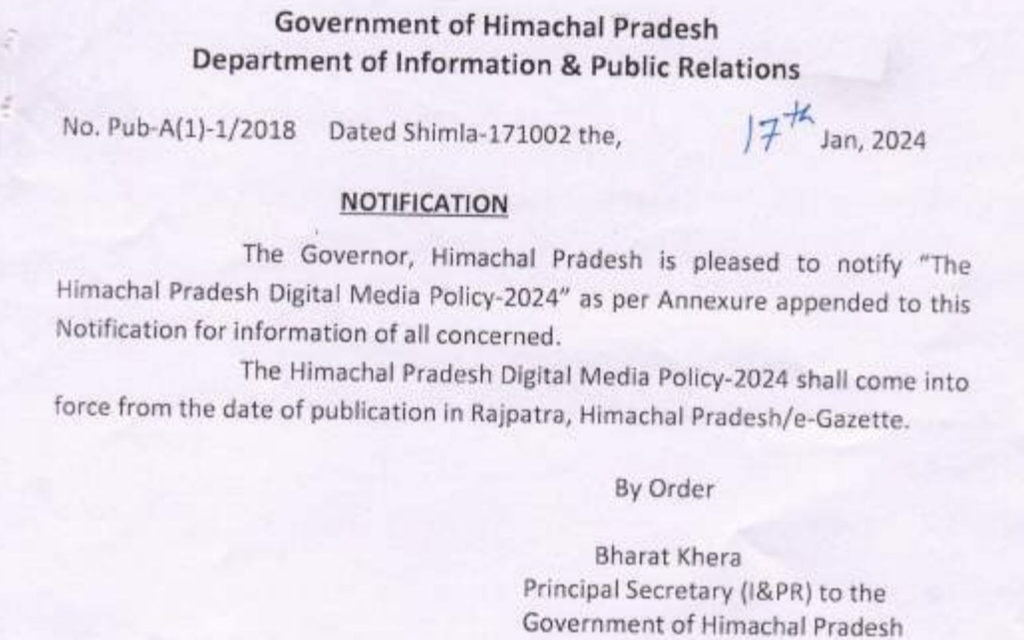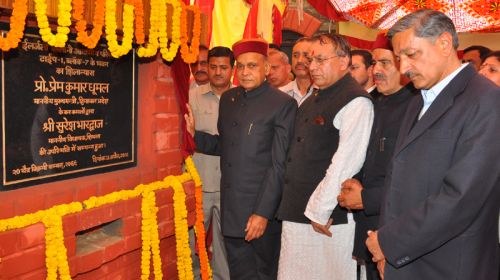Shimla – The Himachal Pradesh Government has officially rolled out the Digital Media Policy 2024, aiming to regulate and categorize news channels, websites, and social media influencers in the state. The policy, which came into effect on Tuesday following its notification, introduces a structured framework by creating three distinct categories.
The Principal Secretary of Information and Public Relations, Bharat Kheda, issued the notification detailing the categories and their respective criteria. Category A encompasses entities with over 30 lakh subscribers across platforms such as Facebook, YouTube, and other mediums. Category B includes those with 10 to 30 lakh subscribers, while Category C is designated for entities with 5 to 10 lakh subscribers. Different advertising rates have been established for these categories.
The policy extends its reach to include social media influencers or handlers, acknowledging their significant role in shaping public opinion. The move reflects the government’s commitment to keeping pace with the evolving media landscape and ensuring responsible dissemination of information.
To be listed as editors of news websites and web portals, individuals must hold a bachelor’s degree or diploma in journalism and mass communication or possess a minimum of 10 years of journalism experience. This requirement aims to ensure a certain level of professionalism and expertise in the field.
The demand for a comprehensive digital media policy in Himachal Pradesh has been mounting since 2014. The newly formed Appointment and Rate Advisory Committee, entrusted with overseeing the implementation of the policy, is led by the Additional and Joint Director Administration as the Chairman. The committee includes the Technical In-charge Officer as the Member Secretary, the Assistant Controller of Finance and Writer as a member, and the Advertisement Officer-in-charge as a member.
This policy marks a significant step towards creating a regulated and responsible digital media landscape in Himachal Pradesh, aligning with the changing dynamics of news consumption in the digital age. As the state adapts to these technological advancements, the implementation of the Digital Media Policy 2024 is expected to foster transparency, credibility, and accountability in the realm of digital journalism.





